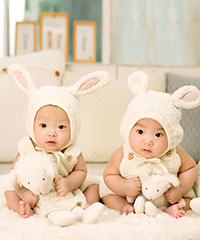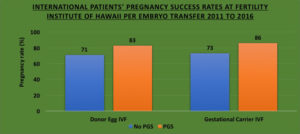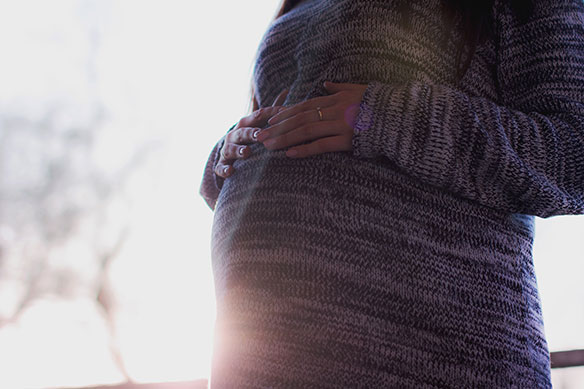Donor Egg IVF Australian Success Rates
Before we jump into the rates of the Fertility Institute of Hawaii, we must first understand how donor egg IVF Australian success rates are calculated, how they work, and what they mean. This will give you a much better idea on your own chances of success when choosing donor egg IVF treatment.
So let’s get started exploring the basics of IVF with donor eggs to build our understanding.

A typical IVF cycle will involve one partner’s sperm being introduced to the other’s egg via In Vitro Fertilisation, or IVF. Egg donor IVF, however, introduces one partner’s sperm with a donor’s egg, or vice versa for donor sperm IVF. If you’ve heard that donor egg IVF often boasts higher success rates than IVF cycles which use a couple’s own eggs and sperm, you heard right! But why do donor eggs (or sperm) perform better than a patient’s own eggs or sperm? Because of the way in which donations are handled. Donors are young, healthy, and have a medical background free of complications and risks when it comes to creating a healthy embryo resulting in a healthy child.
As such, these IVF cycles have the highest success of pregnancy rates, especially in older women whose eggs may not be as healthy, fertile, or numerous. This method gives patients the chance to grow their family when they would otherwise be out of options.
Different Types of Donor Egg IVF Success Rates

The data below represent the success rates at the Fertility Institute of Hawaii for all International patients having an embryo transfer with either donor egg or a gestational carrier and donor egg. The BLUE bars represent Non-PGS (Non-Preimplantation Genetics Screening). The ORANGE bars represent PGS (Preimplantation Genetics Screening)
There are a few ways to measure the success of donor egg IVF including pregnancy rate and live birth rate. The unfortunate truth, as many struggling with infertility know, is that not every pregnancy results in a live birth. While additional treatments such as PGS screening seek to increase the live birth rate as much as possible, it is not always the reality.
This is why it is crucial to pay attention to the results boasted by various fertility centres whether in Australia, the United States, or anywhere in the world. While pregnancy success rates do a wonderful job of indicating the chances of success a certain age group may have in achieving pregnancy, they may not be informative to the actual number of live births resulting from such pregnancies. After all, an IVF cycle is considered a success when your family has grown due to the birth of a healthy child.
At the Fertility Institute of Hawaii, we strive to provide an in-depth and comprehensive look at our success rates to help you identify your potential chances of a successful pregnancy and birth. We measure success by pregnancy rate and live birth rates and we do so by compiling these results from all of our data and the cycles we perform.
Donor Egg IVF success rates for Australian Women over 40
The Australian average for live birth rates in women aged 41 to 42 using standard IVF are as low as 5.8%. At age 43 to 44, that number significantly decreases to 2.7%. From age 45 or higher, there is just the slimmest chance of 1.1% to achieve a live birth.

With donor egg IVF, however, the success rates are significantly higher.
The Fertility Institute of Hawaii is a much sought-after fertility centre not just because of the donor egg services we offer, but our industry-leading success rates. In terms of pregnancy, all patients using donor eggs regardless of age at FIH see initial pregnancy success rates of 70% or more when using donor eggs and transferring 1 PGS-tested normal embryo or 2 non-tested embryos. Cumulative success rates are as high as 95% if patients have additional cryopreserved embryos to use.